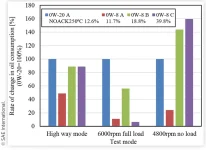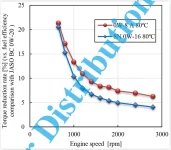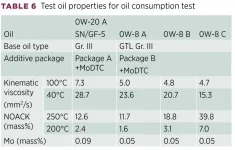I'd bet that variable volume oil pump is sending less oil volume down stream than a good old fashioned PD pump of the same size would. Engineers try to cut back the pump flow volume as much as possible (without causing engine harm) to save a very small sliver of parasitic loss to increase fuel mileage.
It can be either way, you send enough to protect at all range and since you can control how much to send you can use a thinner oil. Or you reduce the flow even more and use a thicker oil, either way it comes out the same.




